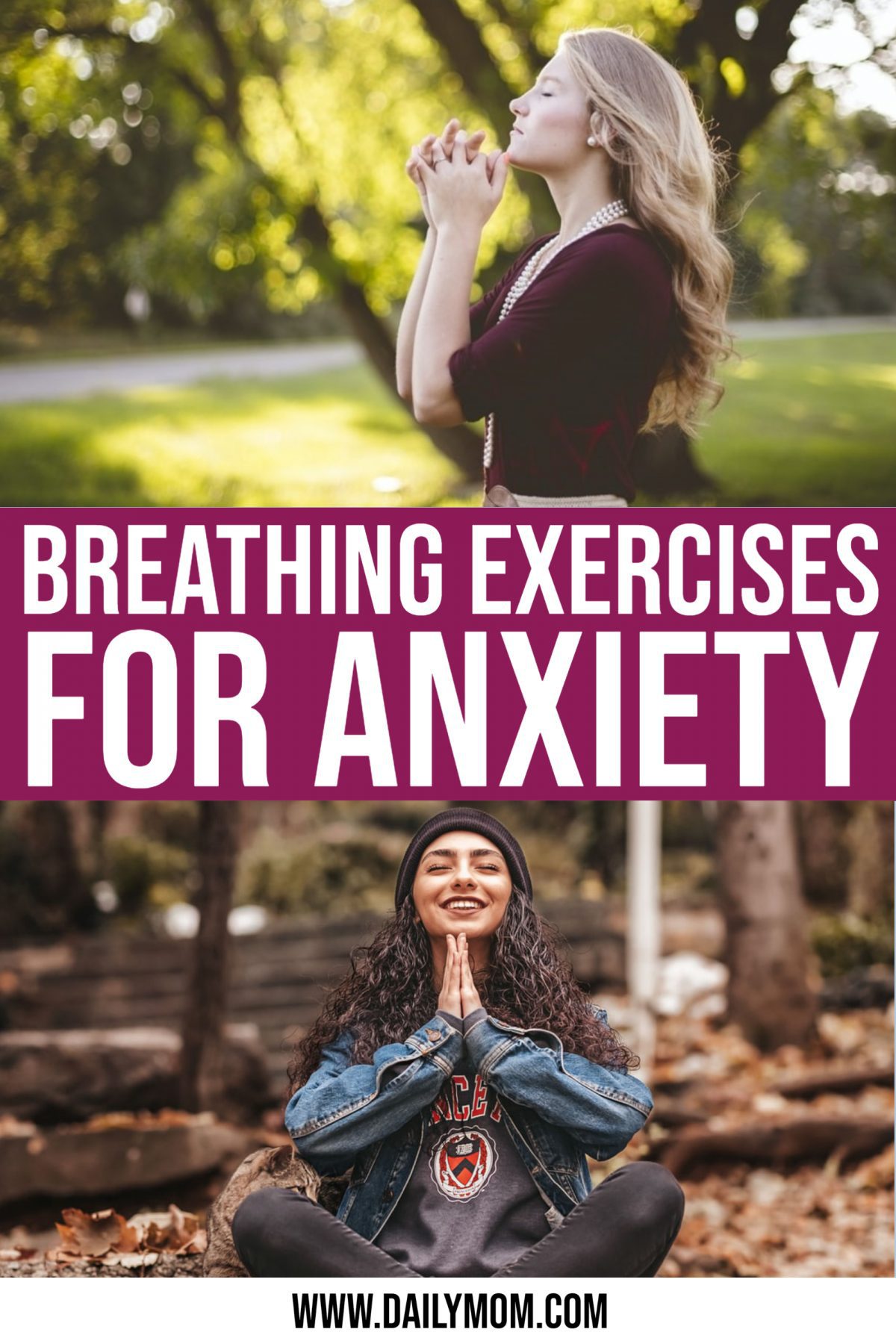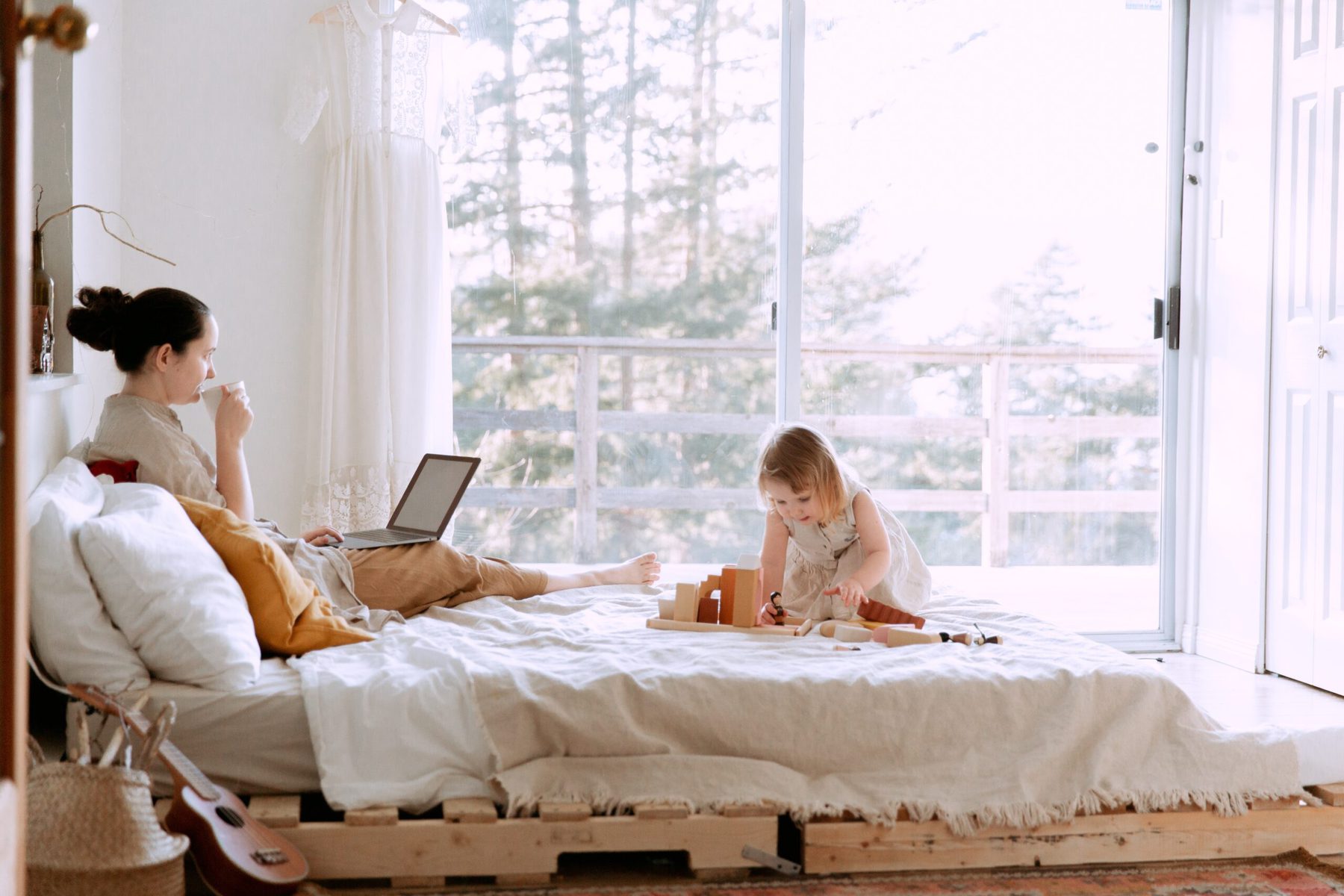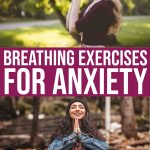When you were little, chances are that when you got upset and cried uncontrollably to the point where you were gasping for breath, your mother probably calmed you down, in part, by telling you to take a deep breath. A few deep breaths later and those gasping sobs stopped and you were back to normal. That is because deep breathing is a powerful tool. When used as part of your regular routine (or in your toolbox for when you need to calm anxiety), breathing exercises can make a big difference. Breathing exercises for anxiety are a quick and easy way to help you (and your kids) destress.
The Power of Deep Breathing
Right now, if you took a deep breath in through your nose and then exhaled through your mouth, you would likely notice a difference in how you feel. Just one deep breath can make you feel less anxious. People generally take short, shallow breaths. When you are feeling particularly stressed or anxious, these shallow breaths tend to make you feel more anxious. Taking bigger, deep breaths that fill up your chest and your entire abdomen help ease that anxious feeling because it activates your body’s natural relaxation response.

Breathing exercises for anxiety increase oxygen to your brain and stimulate the parasympathetic nervous system, which doctors often call the “rest and digest” part of your nervous system. It is responsible for your resting heart rate – so that state of calm you want to be in. Tapping into the parasympathetic nervous system calms the other half of your nervous system, the “fight or flight” part, and brings your heart rate down to a controlled, natural rhythm.
Breathing exercises for anxiety also calm you because they help you feel connected to your body. Deep breathing takes your awareness away from the things that are stressing or worrying you and allows your mind to be quiet. Think of deep breathing as a kind of meditation. You are taking your focus away from negative or troubling thoughts and focusing on your breath.
Breathing exercises for anxiety can be used by adults and kids. Kids get pretty anxious and stressed out sometimes too. It can be hard to be a kid. Everyone is telling them what to do and how to do it. They feel pressure to do well in school. They get worried about the world. They also worry about the well-being of their friends and families, just like adults do. Opening up a dialogue with kids about anxiety and about ways to cope will have more long-term benefits than you may imagine.
First, A Few Tips
Before you get started on your breathing exercises for anxiety, there are a few tips that can help you get the most out of deep breathing.
- Focus on your breath. This helps you concentrate on slow, deep breaths. It also helps you shut down any distracting thoughts.
- Avoid trying too hard. Do not force it. If rather than focusing on breathing, you focus on how good of a job you are (or are not doing) at breathing and focusing on your breath, you are likely to tense up and start stressing about breathing rather than letting your breathing calm you down.
- Practice makes perfect. The more you practice and use breathing exercises for anxiety, the easier it will be to find your rhythm and trigger that relaxation response.
- If you practice deep breathing when you are sleepy, it is likely to relax you so much that it will make you even more sleepy. This is not necessarily a bad thing unless you are at a time or place where sleep is not an option (like during the middle of the workday).
- If you are looking to incorporate breathing exercises for anxiety into your daily routine, try to practice around the same time every day and in the same place if possible. The more you make it a routine, the more your body will recognize it as a routine.
Breathing Exercises for Anxiety
It may seem surprising, but there are a number of breathing exercises for anxiety. None of them are better than the others. Try a few out and pick the one that you like best and that makes you feel the most relaxed. You can also mix them up and use different breathing exercises for anxiety depending on the situation and how anxious you are feeling.
Simple Deep Breathing

Relax your shoulders. Inhale slowly and deeply through your nose and fill your belly with air. Your abdomen should expand, but your chest should rise very little. Make an ‘O’ shape with your mouth and slowly exhale through your mouth. As you blow air out try to keep your jaw relaxed. It is okay to audibly exhale so that you hear the breath leaving your body. Take several rounds of these deep breaths in through your nose and out through your mouth.
Alternate Nostril Breathing
Find a comfortable seated position. Take a deep breath in through your nose and exhale through your nose. After you have exhaled, gently press your right thumb against your right nostril to close it completely. Now inhale through your left nostril. Close your left nostril with your right pinky and ring fingers (for a moment both nostrils will be pressed closed). Release your thumb and exhale through your right nostril. Inhale through your right nostril before closing it with your thumb. Release your fingers to open your left nostril and exhale through the left nostril. Continue this pattern for up to 5 minutes.
Try may be one of the breathing exercises for anxiety that works best if you are having problems focusing on your breathing instead of on your worries. The pattern of opening and closing alternating nostrils can help refocus your mind even when your mind does not want you to.
Teddy Bear Breathing
Lie on your back and place a stuffed animal on your stomach. Relax your body. Take a slow, deep breath in through your nose and fill your belly with air. Feel the stuffed animal slowly rise. Then slowly breathe out through your mouth and feel the stuffed animal lower back down as all the air leaves your belly. Repeat this until you feel relaxed.
Of the breathing exercises for anxiety, this may be the easiest one to use to teach kids how to use deep breathing. Tell younger children that they are rocking their stuffed animal to sleep so that they take enough rounds of breath to quiet their worries.
Shoulder Roll Breathing
Find a comfortable seated position. As you take a slow deep breath in through your nose, raise your shoulders up towards your ears. Slowly exhale through your mouth, lowering your shoulders as you exhale. Repeat while slowly rolling your shoulders up and down with your breath.
This is another one of the breathing exercises for anxiety that is easy to teach kids because they have a movement to associate with their breathing.
Breath Focus Breathing

Close your eyes. Take a few big deep breaths. Now breathe in and imagine that the air filling up your lungs is filled with a feeling of calmness. Try to let your breath and that feeling fill your entire body. Breathe out and imagine that as the air leaves your body, the stress and anxiety leaves your body too. Now, as you breathe in say to yourself, “I breathe in peace and calm.” As you exhale say to yourself, “I breathe out stress and anxiety.” Continue this for several rounds.
Breathing exercises for anxiety can be made your own. For breath focus breathing, make it your own with whatever mantra that suits you best. You can trade out “I breathe in peace and calm” for “I breathe in relaxation…peace of mind…control of my situation” – whatever makes you feel calm. The same for your exhales. You can breathe out tension, worries, trouble, or you can tell yourself “let it go.” You know yourself best.
Take Five Breathing
Sit comfortably, resting one hand on the floor/table/bed in front of you with your fingers spread apart. Using the pointer finger of your other hand, get ready to trace the fingers of the outstretched hand. Starting at the base of your thumb on the outside of your hand, breathe in slowly through your nose as you slide your pointer finger up to the top of your thumb. Breathe out slowly and slide your pointer finger down the inside of your thumb. Breathe in as you slide your finger up the outside of your pointer finger and breathe out as you trace down the other side. Continue slowly breathing in and out as you trace your whole hand.
Once you have traced your entire hand, if you need to continue breathing, you can work your way backward, tracing the hand from the pinky finger back to the outside of the thumb.
Bumblebee Breathing

Sitting comfortably, gently place the tips of your fingers in your ears and close your eyes. Breathe in through your nose and then hum as long as possible as you slowly breathe out.
Focusing on the humming sound as you exhale helps keep your mind on your breath rather than on other distracting thoughts, making this another one of the breathing exercises for anxiety that is particularly good for kids. It can help teach them to bring their focus inward rather than on everything else around them.
Back to Back Breathing
With a partner, sit on the floor back to back. Sit tall and close your eyes. Decide who will start. That person begins by inhaling deeply and then exhaling slowly. Continue to breathe slowly and deeply. Their partner will feel the rise and fall in the first partner’s back each time they breathe in and out and should try to sync their breathing with that rising and falling so that both partners are breathing in time together.
This is a great exercise for a parent and kid to do together. Not only does it help calm their anxieties, but it also provides some quiet one-on-one time together. It could be a particularly useful technique to practice before bed at night.
It is important to remember that you can use breathing exercises for anxiety on an as-needed basis, wherever you happen to be when you need it. Whether you practice deep breathing every day, once a month, or whenever that panicky feeling strikes, it is going to help calm your mind and relieve some of that anxious feeling. It is also a powerful tool to teach kids when they are young because they can use breathing exercises for anxiety for the rest of their lives.
WANT TO READ MORE?
Check out this article on Raising Kids with an Attitude of Gratitude.

Sources: Take a Deep Breath, Breathing Techniques for Stress Relief
Photo Credits: Unsplash.com










































